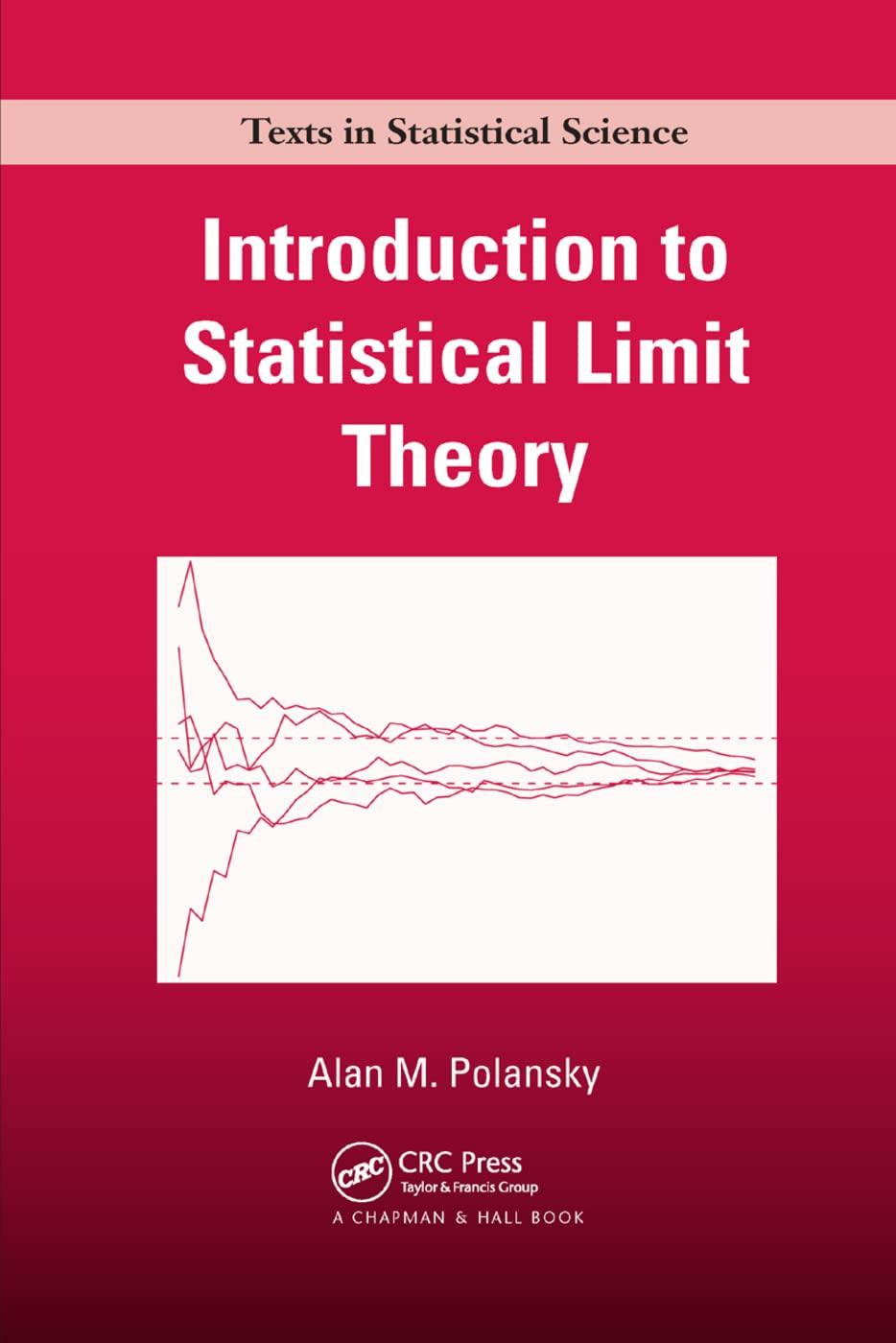Let (X_{1}, ldots, X_{n}) be a sequence of independent and identically distributed random variables from a distribution
Question:
Let \(X_{1}, \ldots, X_{n}\) be a sequence of independent and identically distributed random variables from a distribution \(F\) with parameter \(\theta\) and assume the framework of the smooth function model. Consider a general \(100 \alpha \%\) upper confidence limit for \(\theta\) which has an asymptotic expansion of the form
\[\hat{\theta}_{n}(\alpha)=\hat{\theta}_{n}+n^{-1 / 2} \hat{\sigma}_{n} z_{\alpha}+n^{-1} \hat{\sigma}_{n} \hat{u}_{1}\left(z_{\alpha}ight)+n^{-3 / 2} \hat{\sigma}_{n} \hat{u}_{2}\left(z_{\alpha}ight)+O_{p}\left(n^{-2}ight),\]
as \(n ightarrow \infty\). Consider a two-sided confidence interval based on this confidence limit of the form \(\left[\hat{\theta}_{n}[(1-\alpha) / 2], \hat{\theta}_{n}[(1+\alpha) / 2]ight]\). Prove that the length of this interval has an asymptotic expansion of the form
\[2 n^{-1 / 2} \hat{\sigma}_{n} z_{(1+\alpha) / 2}+2 n^{-1} \hat{\sigma}_{n} u_{1}\left(z_{(1+\alpha) / 2}ight)+O_{p}\left(n^{-2}ight),\]
as \(n ightarrow \infty\).
Step by Step Answer:






